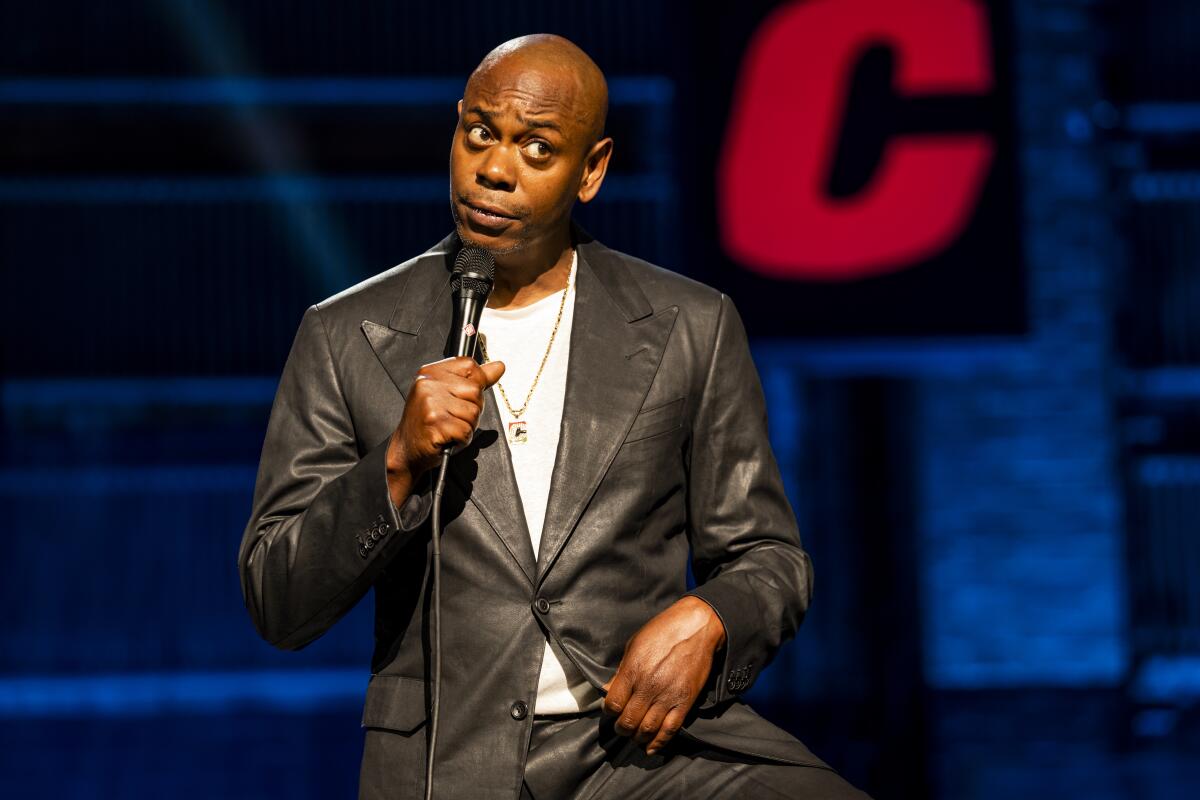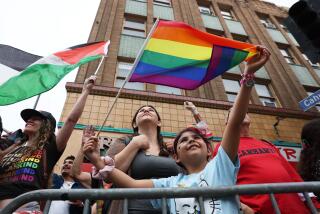Column: What I want Dave Chappelle to understand about the color of queerness

There are queer people in Selma, Ala.
You know, in all of the years I’ve visited, watched documentaries and followed news coverage of civil rights activists crossing the Edmund Pettus Bridge in observance of Bloody Sunday, it had never occurred to me that some of the foot soldiers in 1965 were queer. Or that some of the residents who currently live in this historic town are.
It wasn’t until I watched screeners from season 2 of the Emmy-nominated reality TV show “We’re Here” that I became aware of some of the ways I subconsciously contribute to my own queer erasure.
In fact, it wasn’t until seeing the “Selma” episode of the HBO series — which begins its second season on Monday in time for National Coming Out Day — that I became aware of how much I had accepted the lack of intersectionality in the retelling of our times.
Or in Dave Chappelle’s case, the retelling of jokes.
Now, I happen to think Chappelle is one of the most brilliant comedians to ever pick up a microphone. But when it comes to intersectionality he has painfully glaring blind spots — continuing to tell jokes about the rainbow through a prism of black and white.
In his new Netflix special, when he said the rapper DaBaby, who has been criticized for homophobic comments, “punched the LGBTQ community right in the AIDS,” Chappelle could have easily subbed out “LGBTQ” for “Black” because no group contracts or dies from the virus more than Black people. And not just queer men.
Black women account for nearly 60% of new HIV cases among women. Speaking of which, when “don’t ask, don’t tell” was forcing queer people out of the military, robbing them of their careers, no group was hurt more by this policy than Black women. Most of the trans people killed and their deaths ignored? Black. I could go on, but I think you get the picture.
Maybe if more people knew that Bayard Rustin, an openly queer Black man, introduced the Rev. Martin Luther King Jr. to the principles of nonviolence and organized the March on Washington, they would see how nonsensical Chappelle’s us-versus-them brand of humor really is.
Maybe.
During the “Selma” episode of “We’re Here,” one of the hosts, Bob the Drag Queen, broke down in tears as he spoke with Bloody Sunday survivors. Surprisingly Bob, who is Black, didn’t have a problem connecting to their stories because he is gay.
“Being raised in the South and seeing how Bayard Rustin and James Baldwin were essentially erased — not erased — but their queerness seem to be erased from their context in regards to the civil rights movement so you think their queerness must be a bad thing,” he told me. “Even Dr. Angela Davis, who is still alive, unless she is saying it herself, her queerness gets erased from these movements as well.
“I’ve been … to a lot of places growing up in the South, growing up where I heard people from that generation saying disparaging things about queer people. But I also realize that’s not how everyone thinks. My trauma response, protecting myself, is to shy away from that or diminish that part of myself because history showed me if I don’t diminish myself, it will be diminished for me.”
How do you move past that?
“I don’t know if I am past it.”
Amen.
To grow up in the closet is to grow up as someone else. Detangling the presented self from the authentic self, while unlearning the miseducation, is an ongoing process.
As I watched the “Selma” episode, which appears later in the season, I felt a wave of shame creep over me. Because I had embraced a singular narrative, I overlooked all of the others.
But seeing the show’s three hosts walk across the Pettus bridge in full drag in the light of day, the power nestled within the title of the show revealed itself. We’re here. We’re there. We’re in every town, in every period of time.
That’s the beauty of the show, which follows Bob the Drag Queen along with Shangela and Eureka O’Hara, as they visit small towns around the country to put on shows with the queers who live in the community. It doesn’t spend the entire time focused on what caused the pain. It makes sure to give just as much, if not more, time dedicated to the healing. And for many of the LGBTQ residents in small towns like Selma, that healing begins with coming out.
October is LGBTQ History Month. Monday is National Coming Out Day. Tuesday marks 23 years since Matthew Shepard died. His body was tied to a barbed wire fence outside Laramie, Wyo. His skull fractured, face covered in blood except for the places his tears ran. Times are different than they were in 1998, but the threat of dying solely for being LGBTQ is not.
The Human Rights Campaign reports at least 38 transgender and nongender-conforming people have been killed this year so far. The bravery demonstrated by those showcased in each episode of “We’re Here” is worth more of our time than continuing to argue with strangers on Twitter about Chappelle.
Not that his remarks aren’t problematic — they are — but as “We’re Here” reminds us lovingly, it’s important to save time for self-care and healing. Perhaps some unlearning. Because someone is thinking about coming out to their parents on Monday. Judy and Dennis Shepard will be thinking about their son Matthew on Tuesday.
Chappelle knows we’re here. The LGBTQ community and our allies must remember to take time to show that we’re here for each other as well. In every town. In every period of time.
Oh, and Dave, that’s every race.
More to Read
A cure for the common opinion
Get thought-provoking perspectives with our weekly newsletter.
You may occasionally receive promotional content from the Los Angeles Times.











